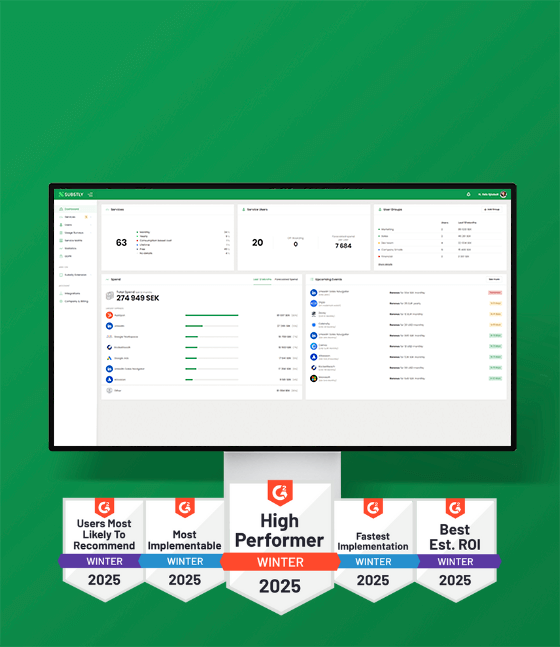In today’s increasingly digitized business environment, organizations rely heavily on Software as a Service (SaaS) platforms to streamline operations, enhance scalability, and remain competitive. However, the accelerated adoption of SaaS solutions introduces new challenges in contract oversight, risk exposure, and regulatory compliance. Smart SaaS audits—enabled by contract analytics software—have emerged as a crucial mechanism for managing these complexities. By offering structured, data-driven insights into the nuances of SaaS agreements, contract analytics software supports a continuous cycle of compliance, performance review, and strategic improvement.
This article explores how organizations can harness smart SaaS audits to mitigate risk, enforce compliance, and create operational efficiencies by using contract analytics software. It also discusses practical frameworks, common pitfalls, and the evolving role of analytics in compliance governance.
Understanding the Context: SaaS Proliferation and Its Challenges
The appeal of SaaS management solutions lies in their cost-effectiveness, scalability, and on-demand nature. Organizations increasingly rely on a broad suite of cloud-based applications—ranging from customer relationship management (CRM) and enterprise resource planning (ERP) systems to project collaboration and cybersecurity tools.
However, with each subscription, a contract is signed, often with complex and lengthy terms that include service-level agreements (SLAs), data privacy clauses, renewal cycles, usage thresholds, and compliance obligations. When multiplied across dozens—or even hundreds—of SaaS tools, managing these contracts manually becomes both impractical and risky. Unchecked, this can lead to redundant subscriptions, missed renewal deadlines, data breaches, and noncompliance with industry regulations like GDPR, HIPAA, or SOC 2.
With the growing complexity of SaaS ecosystems, companies can no longer afford to treat contract management as an afterthought. There’s a rising need for deeper, data-driven insights that go beyond surface-level metrics to ensure compliance, cost-effectiveness, and strategic alignment.
The risks associated with poor SaaS contract oversight are not merely administrative—they can be strategic and legal. That’s why organizations are increasingly turning to smart SaaS audits supported by contract analytics software to assess and realign their vendor management practices.
By leveraging contract analytics software, businesses gain visibility into key contractual obligations, renewal timelines, and hidden risks. This proactive approach helps prevent financial leakage, improves negotiation outcomes, and ensures vendors remain aligned with organizational goals.
What Are Smart SaaS Audits?
Smart SaaS audits go beyond traditional vendor reviews or financial audits. They incorporate real-time, intelligent data extraction and analysis to evaluate not only the financial terms of SaaS contracts but also operational compliance, performance metrics, and risk exposure.
Typically, a smart SaaS audit will include:
- Discovery: Identifying all SaaS contracts in use, including shadow IT purchases.
- Classification: Categorizing contracts by department, use case, criticality, and cost.
- Clause Extraction: Analyzing specific terms such as auto-renewals, SLAs, indemnity clauses, and termination rights.
- Compliance Checks: Ensuring that contracts align with regulatory standards and internal policy requirements.
- Optimization Recommendations: Highlighting opportunities for consolidation, renegotiation, or rightsizing.
These steps allow organizations to shift from a reactive approach to a proactive governance model. By applying analytics to contract portfolios, companies can preempt risks, enhance performance visibility, and improve contract outcomes.
The Role of Contract Analytics Software in Smart SaaS Audits
Contract analytics software plays a central role in enabling smart SaaS audits. These tools use artificial intelligence (AI) and natural language processing (NLP) to parse through large volumes of contract text, extracting actionable data points and patterns that would be difficult—if not impossible—to catch manually.
With a 2023 valuation of around USD 1.2 billion, the global contract analytics software market is expected to grow at a remarkable compound annual growth rate (CAGR) of 11.5% between 2024 and 2032.
Key Functionalities
- Automated Data Extraction
With machine learning capabilities, contract analytics software identifies key contract elements such as start and end dates, renewal terms, pricing models, and SLA commitments. This automation reduces the reliance on legal teams and accelerates time-to-insight. - Clause Standardization and Risk Scoring
The software can benchmark specific contract clauses against standard language or organizational policy. Risky or nonstandard clauses (e.g., vendor-favorable indemnity terms) are flagged for legal review or renegotiation. - Regulatory Alignment
In industries subject to strict compliance mandates, contract analytics software can be configured to identify clauses that may conflict with data residency, confidentiality, or retention laws. - Trend Analysis and Optimization
Over time, the software can uncover patterns—such as frequent auto-renewals or inconsistent pricing models across vendors—supporting strategic sourcing and vendor rationalization efforts.
By structuring unstructured contract data, these tools lay the foundation for consistent and informed audit practices.
Aligning Smart SaaS Audits with Compliance Objectives
The intersection of contract analytics and compliance is one of the most valuable aspects of smart SaaS audits. Organizations are no longer judged solely by their business performance, but also by their adherence to industry regulations and ethical governance. Failure to comply with regulations like the General Data Protection Regulation (GDPR), California Consumer Privacy Act (CCPA), or industry-specific mandates like FINRA or FERPA can result in substantial fines and reputational damage.
Conducting regular audits that ensure compliance with all relevant regulations can avoid unnecessary expenses for corporate SaaS services. Organizations can mitigate risks and maintain a strong reputation in the marketplace by utilizing contract analytics to track and monitor adherence to these standards.
Examples of Compliance-Driven Audit Insights
- GDPR Compliance: Auditing SaaS contracts to ensure that data processors are compliant with cross-border data transfer requirements.
- NIS2 Compliance: Ensuring that contracts with SaaS providers include clauses for incident reporting, supply chain risk management, and service continuity aligned with the Directive's requirements for essential and important entities.
- DORA: Verifying that agreements with cloud and SaaS vendors include provisions for ICT risk management, operational resilience testing, and regulatory access as mandated by the Digital Operational Resilience Act.
With contract analytics software, these validations can be performed systematically and across the entire SaaS ecosystem.
Building a Governance Framework for SaaS Audits
To operationalize smart SaaS audits, organizations must embed them into a broader governance framework. The following components are critical:
Cross-Functional Collaboration
Legal, procurement, compliance, finance, and IT departments must work together to define audit objectives, data requirements, and escalation procedures. A centralized contract repository—enhanced with analytics capabilities—supports shared visibility.
Defined Audit Cadence
SaaS audits should be conducted on a routine basis (e.g., quarterly or semi-annually), particularly for high-risk or high-spend categories. Events such as M&A activity, organizational restructuring, or regulatory changes may warrant off-cycle audits.
Clear Metrics and KPIs
Performance indicators might include the number of noncompliant contracts identified, cost-saving opportunities realized, or vendor risks mitigated. These KPIs help quantify the value of audit activities.
Remediation and Improvement Protocols
Findings from smart SaaS audits must feed into actionable improvement plans—whether through renegotiation, vendor offboarding, or internal training. Contract analytics software can also facilitate automated tracking of remediation progress.
Pitfalls to Avoid in SaaS Audit Execution
Despite the advantages, organizations should be aware of several common missteps when implementing smart SaaS audits:
- Overreliance on Manual Processes: Spreadsheets and email chains are inadequate for managing complex, evolving contract landscapes. Without contract analytics software, audit processes are often inefficient and error-prone.
- Ignoring Shadow IT: Contracts initiated outside of procurement—often by individual departments—can evade oversight. Smart audits must include discovery tools to identify and bring these into compliance.
- Lack of Change Management: Introducing audit tools and workflows without clear communication and stakeholder buy-in can result in resistance or incomplete adoption.
- One-Time Mindset: Treating audits as periodic “health checks” instead of continuous processes undermines their potential. Continuous monitoring powered by analytics is essential for proactive governance.
Emerging Trends in Contract Analytics and SaaS Governance
As both SaaS and compliance landscapes continue to evolve, several trends are shaping the future of smart audits:
Integration with ERP and ITSM Platforms: Contract analytics software is increasingly integrated with enterprise resource planning (ERP) and IT service management (ITSM) systems, allowing real-time syncing of contract data with service usage and spend records.
Predictive Analytics: Some platforms are advancing toward predictive risk modeling, helping organizations anticipate potential SLA breaches or regulatory conflicts based on historical data.
Sustainability and ESG Integration: Environmental, social, and governance (ESG) metrics are becoming part of vendor evaluation frameworks. Contract analytics can help assess whether supplier agreements align with corporate ESG goals.
Generative AI Applications: Advanced generative AI models are now assisting in drafting compliant contract language and summarizing audit findings, accelerating decision-making and reporting.
These innovations are further reinforcing the value of contract analytics software as a cornerstone of smart SaaS governance.
Conclusion: A Smarter, Safer Future for SaaS Management
As SaaS adoption continues to scale, so does the complexity of managing associated contracts and compliance obligations. Traditional audit approaches—based on manual reviews and disparate data sources—can no longer keep pace with the dynamic nature of SaaS ecosystems.
Smart SaaS audits, powered by contract analytics software, represent a more intelligent, proactive, and comprehensive approach to auditing. By automating contract review, identifying compliance risks, and uncovering performance insights, organizations can make more informed decisions, mitigate exposure, and continuously improve their vendor relationships.
What emerges is a governance model that is not only reactive to risk but also forward-looking—one that transforms contract management from a legal formality into a strategic business asset.
If you work in a small or medium-sized business and are looking for a user-friendly SaaS management platform with a short learning curve to help you identify and manage AI tools, consider exploring Substly on your own or getting a personal introduction to see if it suits your needs.



